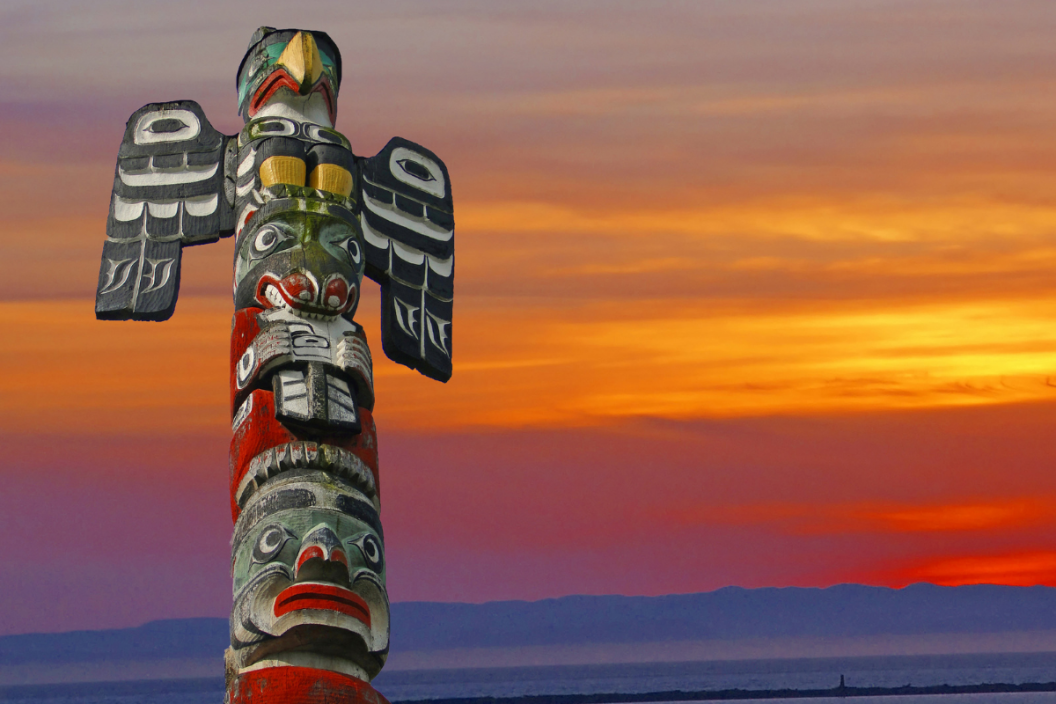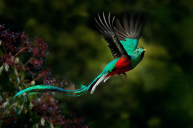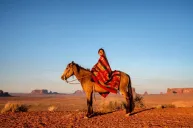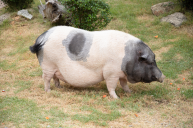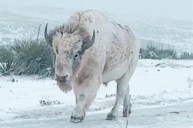Each tribe takes a different approach to Native American totem animals. But all of them hold a deep reverence for animals and the environment around them.
While the notion that specific animals hold significance in the physical and spiritual world dates back to Greek Mythology, Native Americans have a deeper connection with animals. Native American totem animals are a part of each tribe's history and traditions. Native American tradition says that an individual can have different totems through their life guiding them. These animals are used in Native American astrology to deepen the connection to totem animals, which is also reflected in the Native American zodiac.
Totem History
Depending on who you ask, the word totem comes from odoodem, the Algonquian tribe's word for "his kinship group," or according to Britannica, from the Ojibwa word, ototeman Which makes sense because totem poles signify Native American tribes and their families. Totems are sacred to indigenous people and signify their strong relationship and respect for animals that date back tens of thousands of years.
In 1791, a British merchant, who was also a translator, first used the word totem. In his translation, the word meant it was the belief that the spirit animal was an individual's guardian spirit, which made sense at the time since the Ojibwa clans wore animal skins. But it goes much deeper than that. The tribe also believes that animal totems are reminders of the tribe's ancestry. Animal spirit guides appear during vision quests or in dreams in the form of power animals. These different animal guides go through life with tribe members teaching, guiding, and protecting them. But, one main guardian spirit stays with an individual throughout their life.
Totem Animals & Their Significance
https://www.instagram.com/p/CQV7uXgnasw/
RELATED: Wolfdog: Part Wild Animal, Part Furry Friend, but Are They Even Legal?
Totem animals are Native American symbols linked to various traits and hold a lot of symbolism. Often, each tribe had its own totem animal that lent its traits to the tribe. As a result, each animal symbol has its own meaning. Since there are so many different totems, here is a look at just a few.
- Alligator: strength and a fight for survival
- Ant: teamwork and overall perseverance
- Antelope: quick to act
- Badger: great passion, drive, and aggressive.
- Bear: strength, solitude, teaching, motherhood, gatherer, and humility.
- Cheetah: Focused, insightful, and swift.
- Dolphin: shows power and control.
- Dragonfly: the messenger.
- Eagle: great strength, courage, and great leadership.
- Hummingbird: devoted, permanent, eternal.
- Otter: playful, feminine, trusting, inquisitive, loyal, speedy, and trusting.
- Peacock: self-confidence, dignity, and immortality.
- Raccoon: dexterity, curious, creative, and a master of disguise.
- Shark: adaptability, survivalist, and without remorse.
- Weasel: Observant, stealthy, has ingenuity and can see the reasons for things.
- Wolf: loyal but independent and teaches cooperation. Also values family and is protective.
- Woodpecker: empathetic, nurturing, and a good listener.
According to Legends of America, each tribe had a different take on each totem animal's meaning and it could be symbolized as a figurine, emblem, painted or carved stone, or a totem pole.
Totem Poles
Totem poles were constructed for many reasons but are an important piece of Native American culture. Some were created as a way to document events. Others were the clans or family's stories, whether they were myths, legends, or something that actually happened to the person they were honoring.
Some totem poles were created to welcome visitors, while others were built to ward off uninvited guests. Others were built to celebrate an important family member or a momentous occasion, like a wedding. A few were even made to shame someone who did something wrong.
However, not all Native American Indians used totem poles. Six nations in western North America created the original totem poles:
- Haida
- Nuxalt
- Kwakwaka'wakw
- Tlingit
- Tsimshian
- Coast Salish
The most common animals to see carved into a totem pole are the eagle, raven, bear, thunderbird, wolf, killer whale, frog, and beaver. Poles were carved using stones, seashells, bones, and beaver teeth. The most common totem pole colors are black, green, red, and white, and the wood was generally red or yellow cedar since it took a long time to rot. When Europeans came over to North America and saw the magnificent totem poles, they were astonished at the long life of the poles and how well the wood held up. On average, totem poles are 59 feet tall.
Each tribe has its own unique carving style. The Haida carve big eyes into their totems with deep carvings. The Kwakwaka'wakw have a deep carving style too, but theirs have narrow eyes. Both the Tsimshian and Nuxalt feature supernatural and non-human beings in their totems. Finally, the Coast Salish totems have carvings with human-like features. Small totem poles can take as little as three months to carve, while a large totem pole can take as long as nine months.
Have you ever seen a Native American Totem pole? Tell us on our Wide Open Pets Facebook page.
